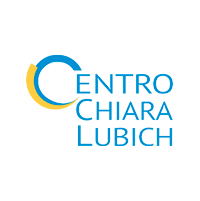I, the brother, God
Since he is love, God is a trinity, that is, he has generated a person worthy and able to love in the same way, and who is infinite: he generated a Son, binding himself to him with a third person, who is the Holy Spirit. If God was exclusively Strength, Honour, or Awe, he would have remained a sole person and would not have generated a Son, or accomplished a creation. He would be closed in himself and would not have opened up. But Christian love is Trinitarian. It is a circle which postulates three points: Father, Son and Holy Spirit; I – my brother – God, and Father – Mother – Son.
Aldous Huxley wrote – even civil progress is a progress in love, and that is, a progress towards God, a climb from the earth to heaven. It is an endeavour to give a divine soul to society, making the members participate in the divine nature. We progress inasmuch as we love, that is, life grows, freeing us from deadly bonds.
All of the «new» commandments are enclosed here, very simple, yet very difficult.
Now this love operates like a fire that cleanses the soul of all the debris and liberates the divine in it, in order to rise like an antenna to capture in the universe, God. Sanctity sought in this manner is proportional to our capacity to receive the Spirit of the Lord and retransmit it to mankind.
Egoism pulls everything towards oneself. Love gives all of itself, and as such, seems to be an alienation. Instead it is a liberation.
If I have to love my brother as I love myself, I have to be Christ for my brother. That is, not only is my brother Christ for me, but I am, and must be Christ for him. Jesus reduced the 640 precepts of Judaism to only two: 1) Love God; 2) Love your neighbour. After that, in the last evening of his life amongst men, Jesus reduced the two to only one, according to the simplicity and unity of God. He said, «I give you a new commandment: love one another. Love one another as I have loved you.» (John. 13, 349).
It is simple: love in the divine way.
Igino Giordani, The Brother, New City publishers, Rome 2011, p.34. 49-50. 82




